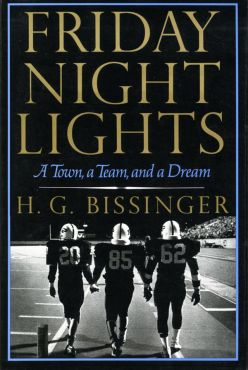Shrek
The long-running Dreamworks franchise revitalised Eddie Murphy's flailing career and used to include the highest grossing animated film of all time (Shrek 2, until it was replaced by Toy Story 3). It is inspired by "Shrek!", a picture book written and illustrated William Steig in 1990
Mrs Doubtfire
As lowbrow as this may be, it's in many respect a powerful demonstration of how Robin Williams can often squeeze so much from so little. A comedy about divorce and a transvestite nanny, it was based on the slightly more serious novel Madame Doubtfire, (also known as Alias Madame Doubtfire) from1987
Jumanji
This great 1995 family film features Williams again, this time in a story about a jungle based board game coming to life. The special effects look dated now, but they were cutting edge at the time. Based very loosely on a short illustrated story of the same name by Chris Van Allsburg
Homeward Bound
I adored this when I was a child. Its basically about some household pets who get left behind in a move, and cross the country in search of their owners and their new home. Very funny when you're young, especially Michael J Fox. It was based on The Incredible Journey by Sheila Burnford, and actually a movie of the same name was also produced in the 60s. Another version of the same story exists with home appliances called The Brave Little Toaster which I also recommend
Psycho
A Hitchcock classic, which gave us the now oft-referenced shower scene, and an oddly soulless remake by Gus Van Sant. It was actually based on Psycho by Robert Bloch, which was released a year before the film was
Die Hard
Arguably the greatest action film ever made, this is a film that every man in the entire world loves. Its contained action comedy gave us a cocky hero who looked like he's gone to hell and back by the end, and a delicious euro-baddie in Hans Gruber. It was based on Nothing Lasts Forever by Roderick Thorp although much license was taken, including making the hero younger, and adding more comedy
Dr Strangelove
IMDB often lists this as the greatest comedy ever made, and while I wouldn't go that far, it is a great bit of film making. It rarely outright jokes, though little throwaway gags do crop up, but the ingenuity is how the absurdity of the potential Apocalypse plays out with such realism. It was based on Peter George’s 1958 novel Red Alert, although the original simply details the ease with which Armageddon can occur - Kubrick turns this into a fully realised black comedy
Roger Rabbit
A cult classic, and quite a clever idea to boot, this was a tale of a classic noir detective, crossed with looney toons style hijinks. It was based on Who Censored Roger Rabbit by Gary Wolf
Howl’s Moving Castle
This story of a young, inexperienced wizard is actually one of my least favourite Studio Ghibli productions and I guess this is one reason why. Instead of being an original idea, it is a modified version of the young adult fantasy book of the same name by Diana Wynne Jones.
First Blood
One of Stallone's 2 great franchises (although he's working hard on establishing his third), the first is by far and away the best. Dark, and claustrophobic, the tale of a Vietnam vet with PTSD trapped by a local sheriff was based on First Blood by David Morrell, written back in 1972 novel. If Hollywood had followed the novel's bleaker ending, we could all have been spared Rambo III
John Carter
This may have been a major box office flop, but I quite liked it. With some sharper scripting and editing, it may even have been our generations Star Wars. Unfortunately it was a bit confusing and unevenly paced, and the romantic chemistry lacklustre. It is based on A Princess of Mars, a 1917 pulp science fantasy novel by Edgar Rice Burroughs, which is the first in a series of eleven. Hollywood had their eyes on sequels but the massive box office failure has killed all those plans
Hugo
Scorsese's first Children's/family film was met with great critical praise, but I never fell in love with it. It was sweet, but it all seemed a bit too forced for me, a bit like Burton's Big Fish. Also the British accents just grated for some reason. It is based on The Invention of Hugo Cabret by Brian Selznick
Fast Times at Ridgemont High
This is an unusual one, in that the film is now very famous, as an example of errant American Youth in the 80s. What's less known is Cameron Crowe adapted the film from his own book of the same name, published a year earlier, which was a non-fiction account of his time undercover as a student in a high school
Girl, Interrupted
This mental institution drama features Angelina Jolie is one of her better roles, alongside shoplifter Ryder. It was based on Susanna Kaysen's memoir of the same name
Brokeback Mountain
I've not seen this, but its well know, unfortunately, as being "that gay cowboy film," though in truth I'm sure its much more. It was based on a 1997 short story of the same name by Annie Proulx
Friday Night Lights
A quiet little film by Peter Berg which itself spawned a 5 series TV show, this all began as a non-fiction book called Friday Night Lights: A Town, a Team, and a Dream by H. G. Bissinger. It was an account of the Primeron Panthers, a High school Football team in Texas, and the biases and inequalities Bissinger observed during their season









.jpg/230px-Howl's_Moving_Castle_(Book_Cover).jpg)













